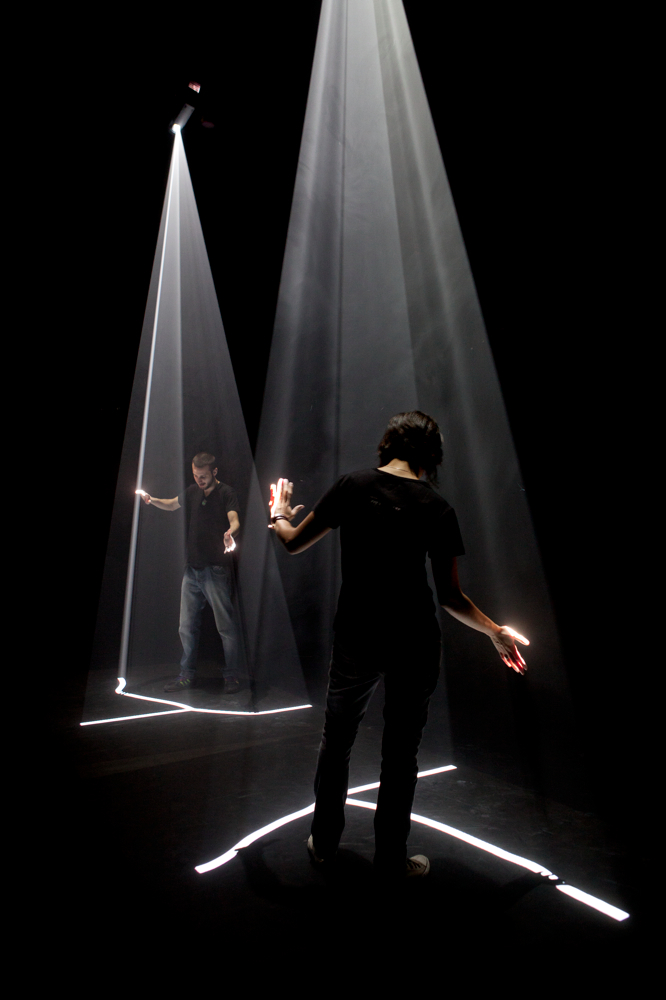
ERNESTO KLAR
LUZES RELACIONAIS
2010
Relational Lights is an interactive installation
that explores the ways in which the individual
and expressive human subject occupies a
shifting and variable space in relation to
others. The installation uses light, sound, haze,
and a custom-software system to create a
morphing, three-dimensional light-space in
which spectators actively participate,
manipulating it with their presence and
movements. The work functions as a living
organism with or without the presence and
interactions of spectators. When viewers step
outside the projected light-space, the system
begins its own dialogue with space by means
of extruding and morphing sequences of
geometric light forms. And when viewers
penetrate and interact with the projected lightspace,
a collective and participatory
expression of space unfolds. Relational Lights
amplifies the three-dimensional fabric of space
by making it visible, audible, and tangible to
participants. The resulting aesthetic experience
encourages an unending relational process of
shaping space among participants.
Ernesto Klar created Relational Lights as a
tribute to the work and aesthetic inquiry of
Brazilian artist Lygia Clark (1920-1988.)
Relational Lights emphasizes the spectator's
relationship with what Lygia Clark called the
"expressional-organic" character of space, and
expands on her conception of the "organic
line." The latter is the root of Lygia Clark's
progressive interest in and inclusion of the
viewing subject within the work of art.
Relational Lights takes examples of the "organic
line" in Lygia's oeuvre, such as her Modulated
Space maquettes from 1958, and literally
extrudes them as interactive planes into threedimensional
space. Spectators are able to
modulate and penetrate the "organic line" itself
while maneuvering within the space. Relational
Lights brings about an awareness of the
spectator's bodily occupations of space in
relation to others.
"Luzes Relacionais" is a sponsored project of
the New York Foundation for the Arts. This
project is made possible, in part, with funds
from the New York State Council on the Arts.
Additional support has been provided by the
generous grants from the Greenwall
Foundation and the The Experimental Television
Center's Finishing Funds program. The latter is
supported by the Electronic Media and Film
Program at the New York State Council on the
Arts.

